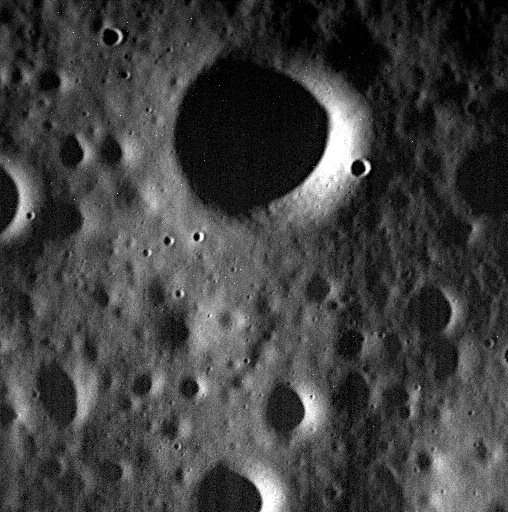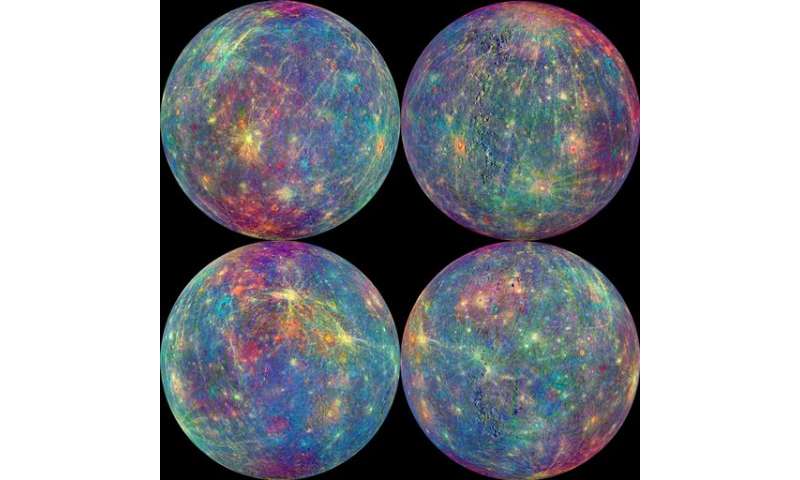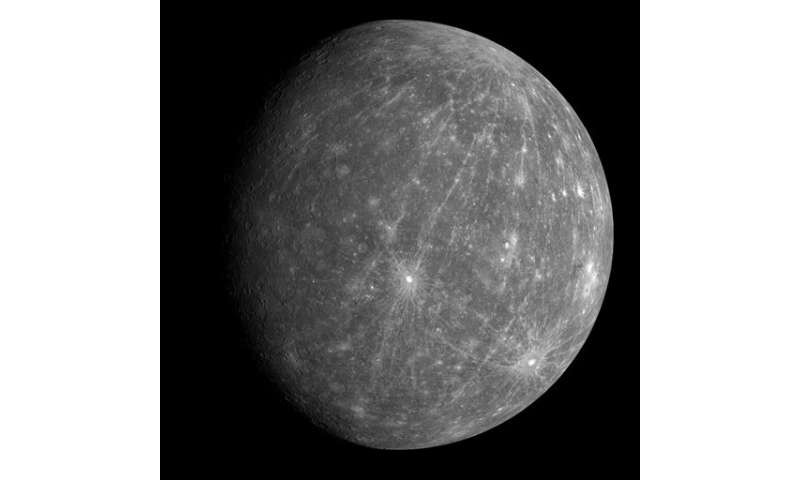Doomsday at Mercury: NASA craft close to falling into planet

The only spacecraft ever to orbit Mercury, NASA's Messenger, is ending its four-year tour at the solar system's innermost planet with a crash landing.
Messenger was expected to slam into Mercury on Thursday afternoon, plunging from orbit at a speed of more than 8,750 mph (14,081 kph) and creating a crater an estimated 52 feet (16 meters) across.
Messenger became the first spacecraft to orbit hot, little Mercury, in 2011. Since then, it's circled the solar system's innermost planet 4,104 times and collected more than 270,000 images.
Flight controllers managed to keep the spacecraft going in recent weeks by using helium gas not originally intended as fuel. But now the gas is gone and gravity is tugging.
Mercury is the last of the rocky inner planets in our solar system—also counting Mars and Venus—to be littered by mankind.
Thursday's crash was expected to occur on the side of Mercury facing away from Earth and telescopes. If controllers cannot regain contact with Messenger when it's supposed to be back in the coverage zone, then they will know that it has, indeed, succumbed to gravity. Confirmation is expected 30 minutes after the impact.

"I want to send out a big thank you to everyone who has worked on my mission and has followed my story!!" the Messenger team said via Twitter on Thursday morning. This tweet followed a few hours later, along with a sad face emoticon: "Well, I've got 3 hours and 26 minutes left."
Messenger was launched from Cape Canaveral, Florida, in 2004.
-

In this undated photo provided by NASA, technicians with The Johns Hopkins University Applied Physics Laboratory in Titusville, Fla., prepare the MESSESNGER spacecraft for a move to a hazardous processing facility in preparation for loading the spacecraft's hypergolic propellants. (NASA via AP) -

This combination of images provided by NASA shows the readings from the Mercury Atmosphere and Surface Composition Spectrometer (MASCS) instrument aboard the Messenger spacecraft. Colors were added to study both the exosphere and surface of the planet. (NASA, Johns Hopkins University Applied Physics Laboratory, Carnegie Institution of Washington via AP)
More information: NASA: www.nasa.gov/mission_pages/messenger/main/
Johns Hopkins University: messenger.jhuapl.edu/
© 2015 The Associated Press. All rights reserved.


























